Team: Elena Naids, John Sanchez, Nadine, Fei Gao
Tools: Recording device, Qualtrics, Omnigraffle, Sketch
Topic: Class Project -- Inquiry Methods & Use Analysis
Personal Contribution:
- independently observed 1 user and interviewed 3 users to gain research data
- collaborate with teammates to analyze observation and interview data
- created sequence model and 3 user models
- participated in creating survey questions
- conducted statistical tests to test our hypothesis
The Problem
If you share your living space with someone else, you might probably encounter a lot of problems when sharing bills with your roommates, for example:
you're often upset because your roommates often forget to pay you back, or you don't have access to your bill accounts and you're not sure if your roommate
charges more money from you, you want the money to be transferred to your credit card directly but your roommate keeps paying you in cash.
In this project, we researched people's bill sharing behaviors in order to answer the question: how can we facilitate shared bill paying with roommates through a
technology solution. We used three methods to gather and analyze data: observation, interview and survey. One of the objectives in our project was to identify the best way to share bills.
Observation
Data collection methods
- Each member conducted 1 observation with his particiapnt and took field notes during the process, with 4 observations in total.
- To minimize bias, no family, marital, or romantic relationships were included.
- Participants were asked to demonstrate their process of preparing, executing and confirming payment of their monthly bills.
- We watched how they split their bills, how they used online tools to transfer money, as well as other unexpected actions.
Data analysis methods
- We used AEIOU (activities, environment, interactions, objectives, users) framework to frame our field notes.
- We used Affinity Diagram to group observations and look for common themes.
Key Findings:
- We identified 2 user types: primary account holder (responsible for paying and splitting all the bills), and common roommate(s) (pay back the money after the primary account holder pays their bills).
- The 2 users will both go through 3 phases: preparation, execution, and confirmation. But the amount of work differs greatly.
- Account holders have too much to do and will encounter most of the problems during the process.
We created a sequence model to demonstrate the bill sharing process. We were actually surprised by how much work the primary account holder needs to do, one of our participants also said that he was frustrated to be the "parent" in the house and had to look after everything. We believe this sequence model is not the ideal way for people to share the bills.
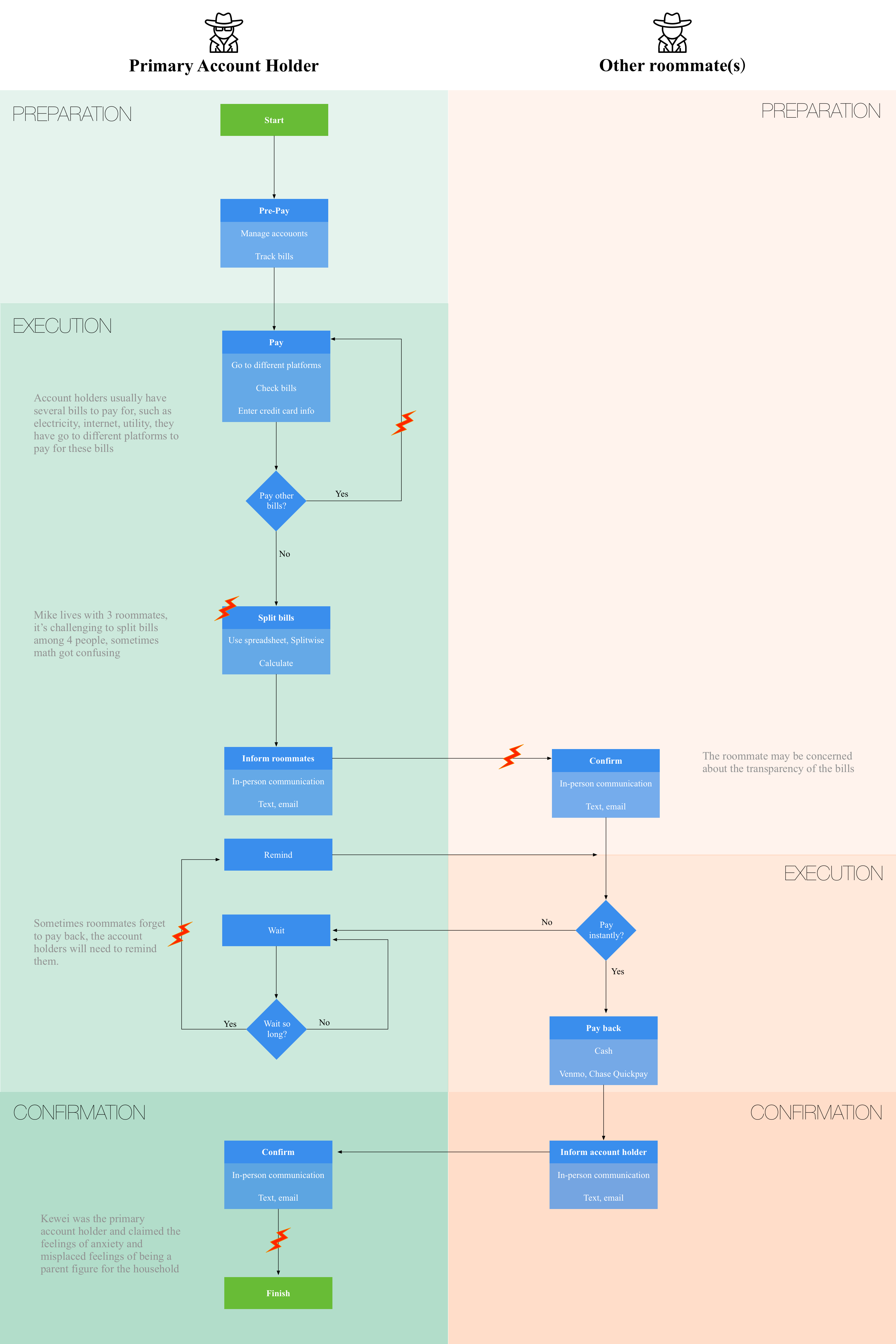
Interview
Data collection methods
- Each member interviewed 3 participants independently, with 12 interviews in total.
- Participants were asked a series of questions regarding their current living situation, bill splitting and bill sharing conflicts.
- We took notes during the interview and recorded the audios with the participants' consent.
Data analysis methods
- Each member transcribed his/her interviews.
- As a group, we went through the 12 interviews one by one and performed inductive analysis on each of them, we coded the findings into major categories.
- We identified 10 spectrums of characteristics and behaviors in our participants, and placed our participants onto the spectrum according to their responses.
Key findings
- Interestingly, we found participants showed distinctive characteristics based on 2 spectrums: Account Management Methods(S1) and Bill Sharing Methods(S2).
- With these 2 spectrums, we created a matrix to place our participants and identified 3 distinctive bill-sharing methods.
- Further more, we recolored our original sepctrums based on the matrix, we found more common grounds in each method and finally synthesized 3 models.
In fact, the sequence model that we identified in our observation belongs to the second bill-sharing model (single account holder + equally split payments). The data from our interviews also proved that this method is not ideal because the only 3 people who stated severe negative emotions to their roommates all used a single account holder method.
On the other hand, while only 2 participants used this method, the third model (mutually shared accounts + equally split payments) caught our attention, this model shows great potential in ensuring the transparency of the accounts and bills, keeping moderate amount of work for every roommate and maintaining positive relationship between roommates.
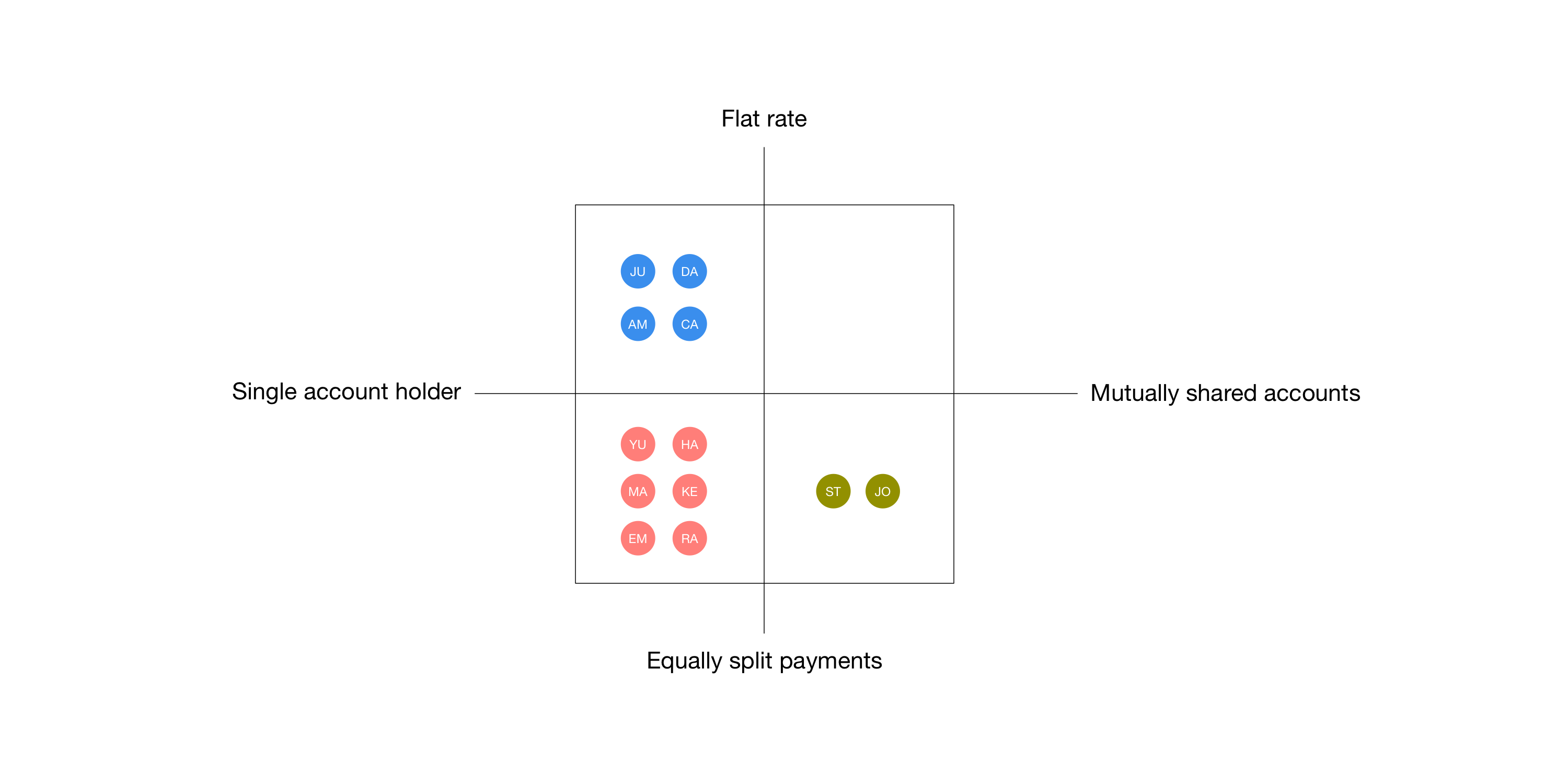
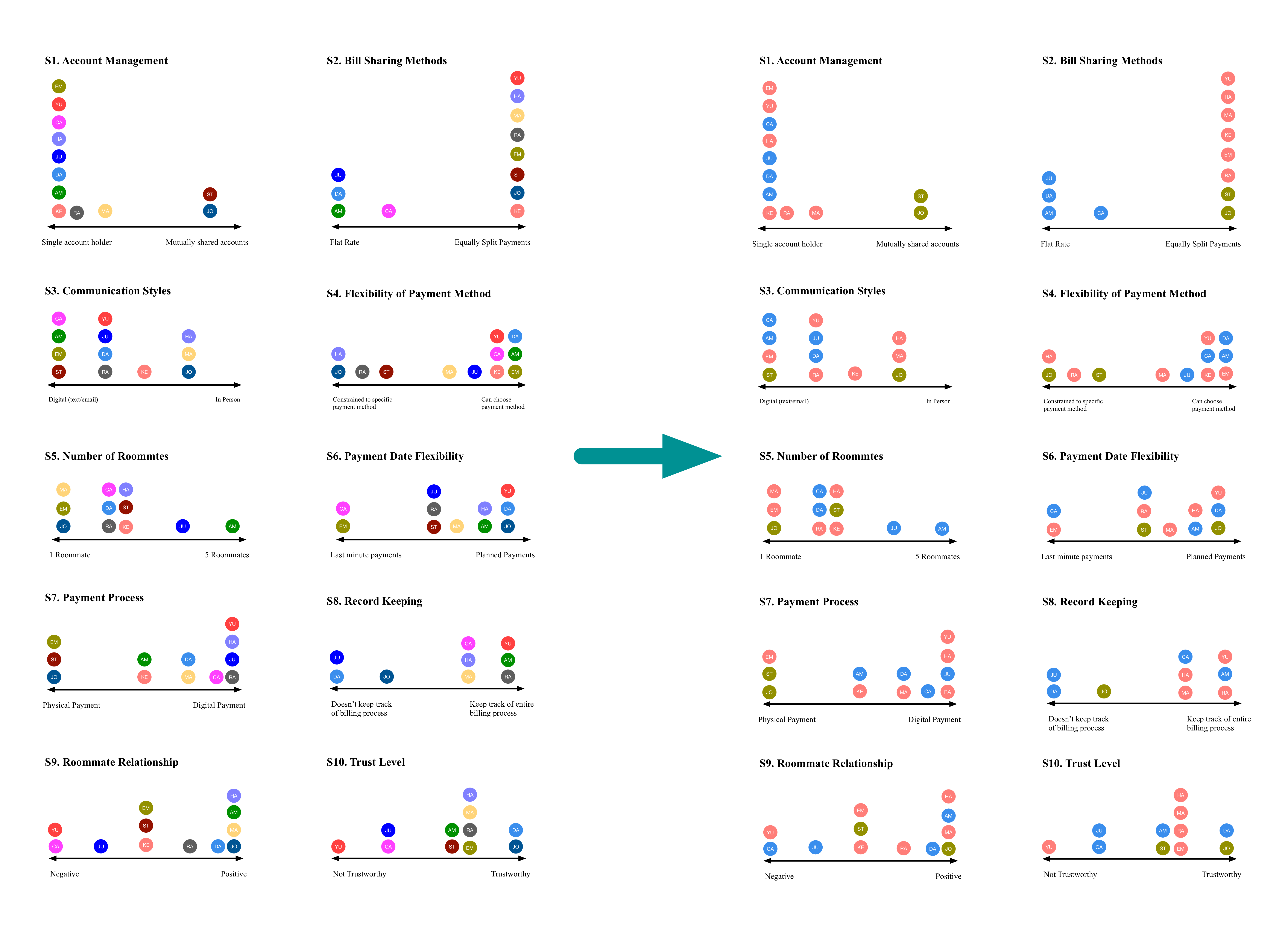
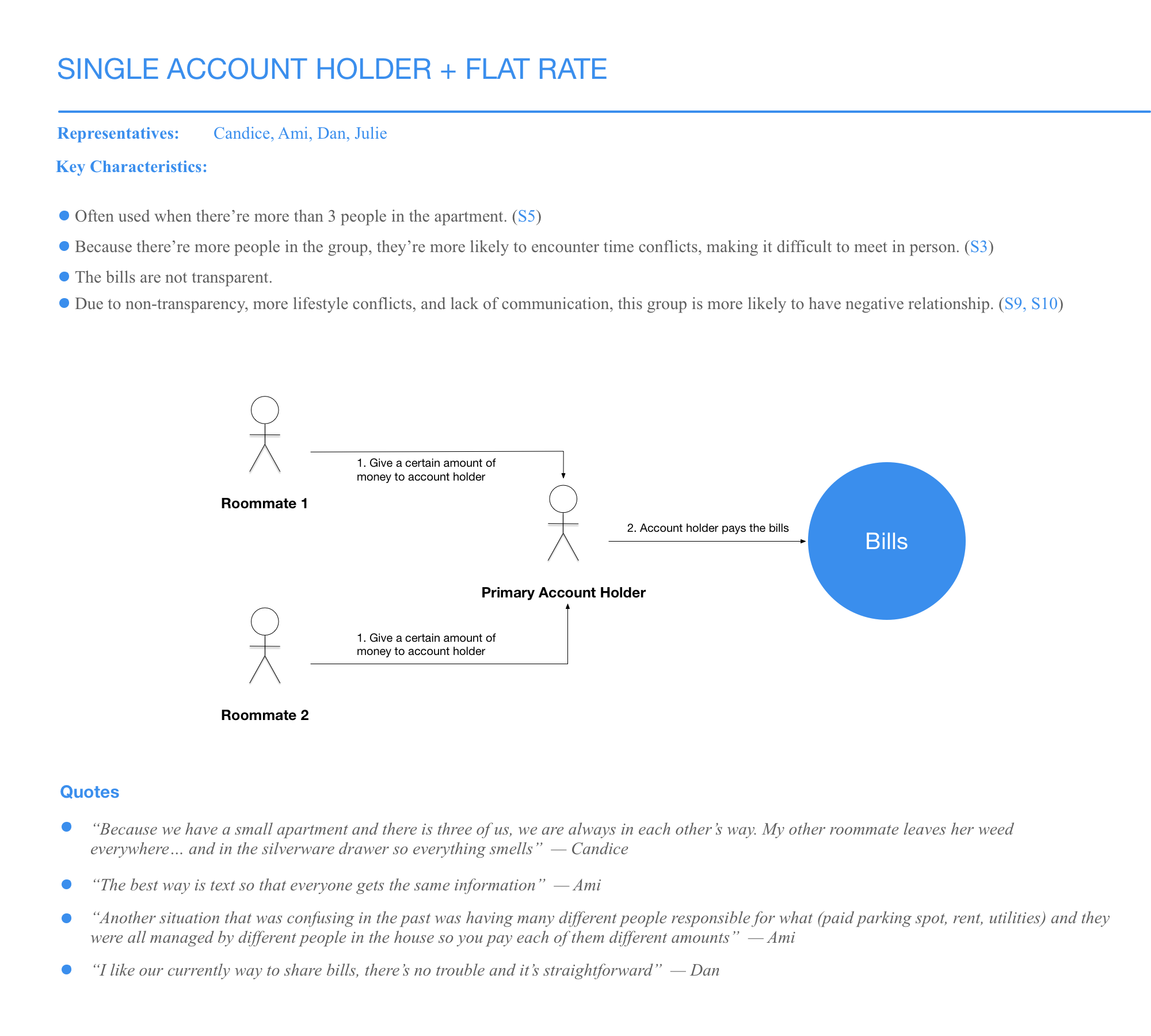

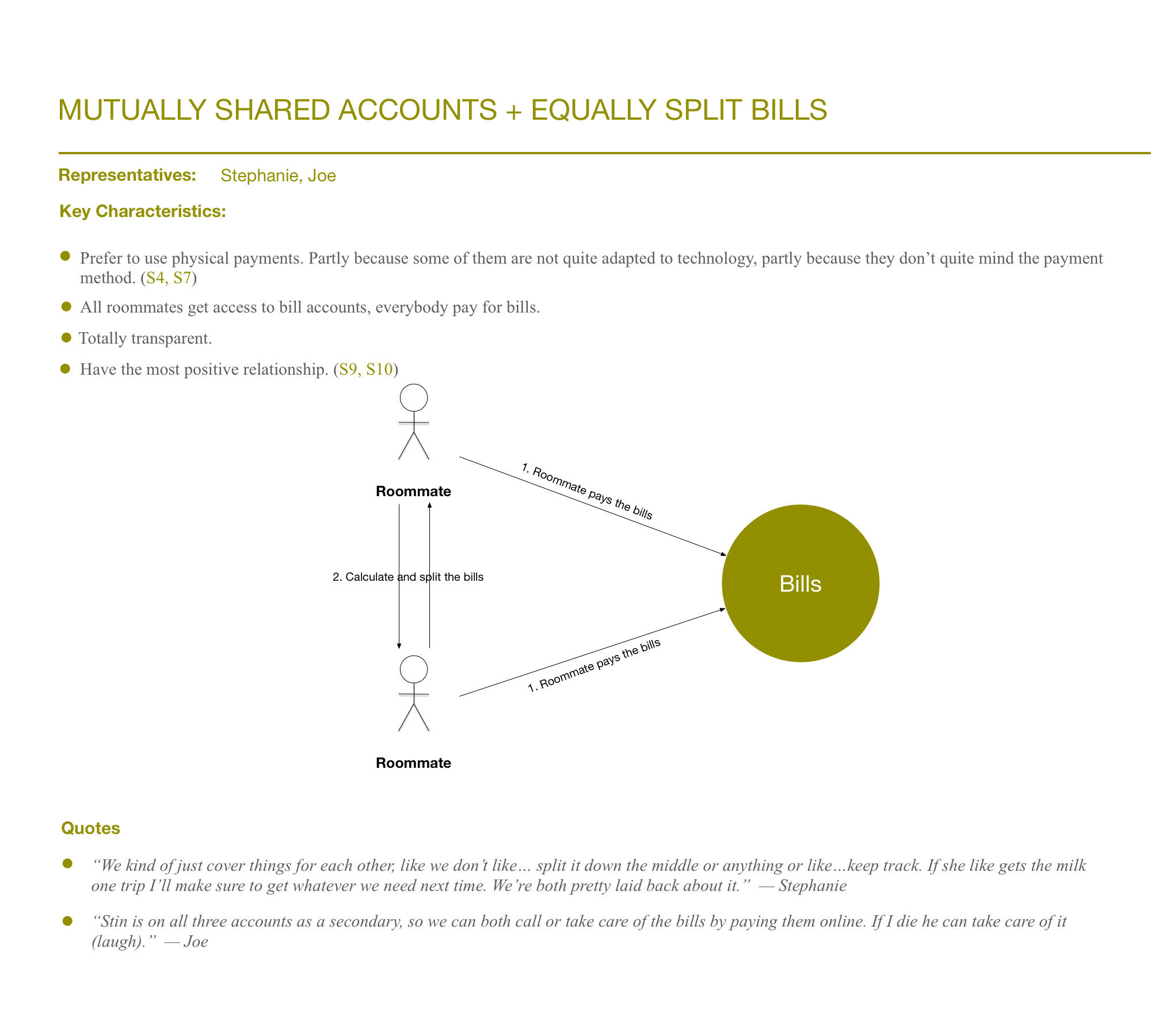
Survey
Data collection methods
- We used Qualtrics to conduct our survey, our survey contained 36 questions in total including 4 open-ended questions
- We asked: screening questions, relationship with their roommates, personal opinions on living with others, payment process, account management, and demographics
- We recruited our participants through our school's participant pool, social media websites and our personal network. We received a total of 35 responses.
Data analysis methods
- We sorted our raw data from our survey into spreadshets and generated charts to illustrate the participants' responses.
-
We raised several hypotheses, some important ones are:
- Hypothesis 1: The needs of transparency will be affected by extenal factors (test 1, test 2, test 3).
- Hypothesis 2: Roommates' relationship will impact their communication methods (test 4, test 5).
- Hypothesis 3: Digital tools will help to improve efficiency when sharing bills (test 6).
- With the data that we collected in our survey, we conducted Mann-Whitney Test and Kruskal-Wallis Test for the 3 hypotheses.
Key findings
- We thought people's needs of the transparency of the bills will probably be affected by some factors, for example, if one people have 100% trust on his roommate, he may not need to see the bills. We were wrong, our test for hypothesis 1 didn't show any significant differences, even in the most positive relationship, roommates still want some certain level of transparency.
- The data showed that there's some connection between roommates relationship and the communication methods they use. The more positive the relationship is, the more likely they will communication in person.
- We thought digital tools, such as Venmo and Chase Quickpay, can improve the efficiency when splitting bills. Surprisingly, our data showed we were wrong. Paying in cash or paying with digital tools does not affect how long it takes for people to share bills.

Design Principle
So how should we handle the problem with a technology-based solution?
- With the findings in observations, interviews, and survey, we set up 3 design principle: transparency, efficiency, flexibility.
- We splitted the bill-sharing process into 4 steps: management accounts, viewing bills, make a payment, split payment.
- We wanted to make sure the design principles are followed in each step, thus we created this matrix
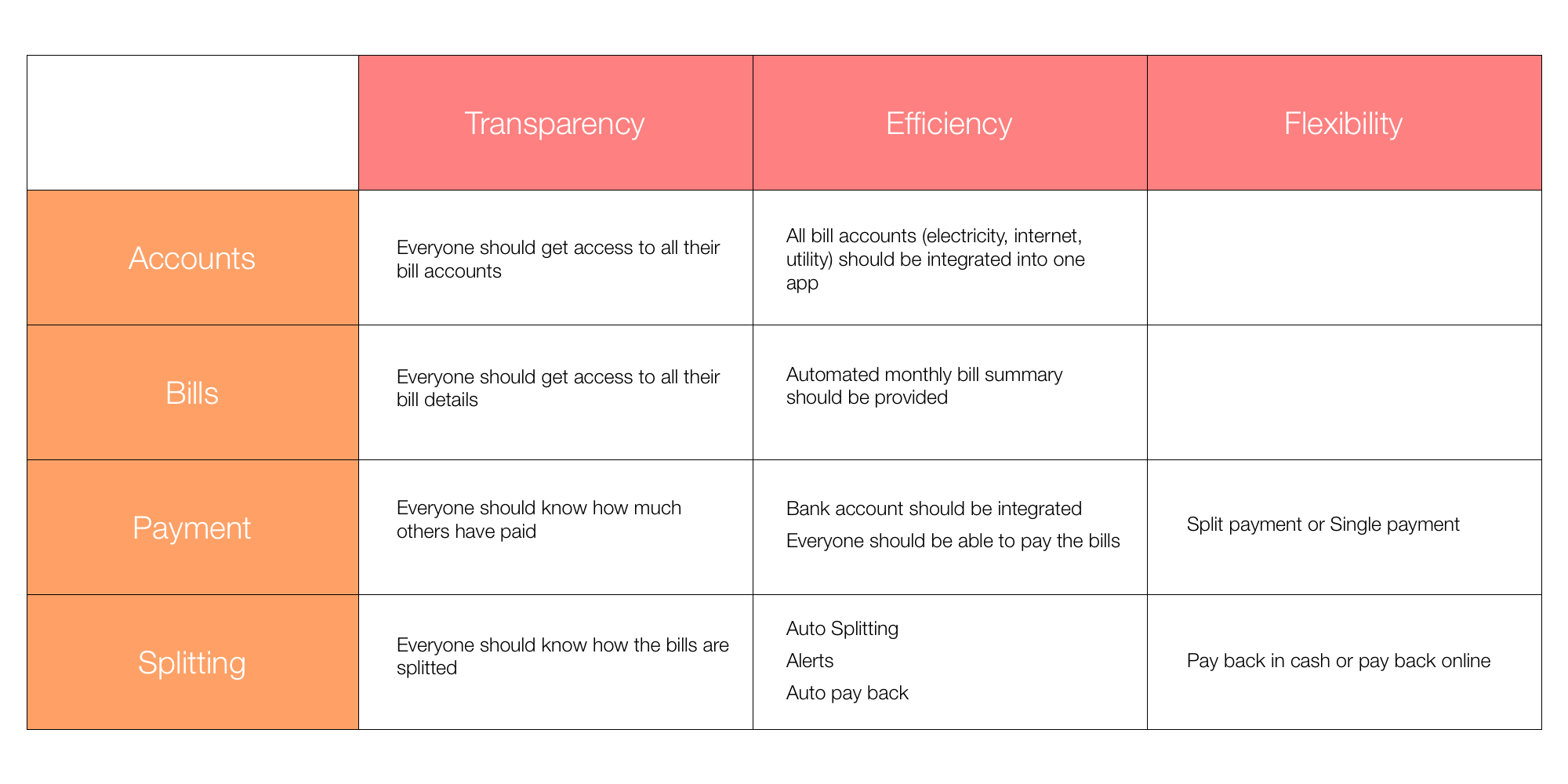
Screen Examples
